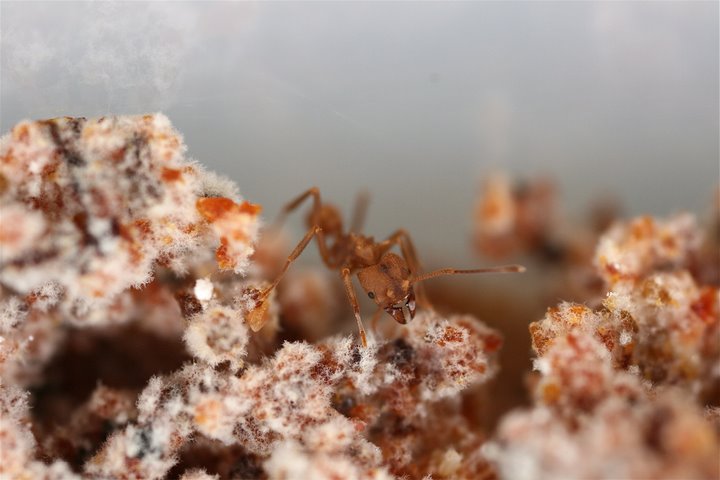Scott Solomon is “The Ant Hunter”
/https://tf-cmsv2-smithsonianmag-media.s3.amazonaws.com/filer/scottcocos2006_cropped.jpg)
When troops of "crazy rasberry ants" invaded Texas last year, surprised homeowners found the bugs wedged inside personal computers and shorting out electrical devices. Even NASA grew concerned when the ants marched into the Johnson Space Center. As the species' seeming attraction to electronics became a news maker, Scott Solomon explained over at Slate:
"Invasive species like the crazy rasberry ant are adapted to environments that are constantly changing, so they are always searching for new homes. Electrical switch boxes, gas meters, or your PC make ideal homes because they are dry and have small, easily defendable entrances," Solomon wrote.
Solomon, a postdoctoral research fellow at the Smithsonian's Ant Lab, enjoys sharing his passion for science with the public. He wrote about the effort to create a virtual Lucy fossil for Wired.com and scribed science feature articles for his student newspaper at the University of Texas. But his most personal project is his blog, "The Ant Hunter," where he shows, through pictures and words, both the unglamorous and the exotic world of entomological research.
In the blog, Solomon writes about crawling through a Brazilian desert at night, dodging scorpions and spiky shrubs, as he searches for ant colonies. The fieldwork he does is far from a leisurely vacation. At some points, dinner has consisted of instant coffee and crackers, highlighted by a trip to a nearby diner for grilled goat. Sleeping can be a hazard as well, especially if army ants are seizing your bed. And Solomon always seems to travel during the wet season. "Sometimes it's miserable," he says, "but I love it and it's a lot of fun." According to his 10-year-old cousin, Solomon is like the Crocodile Hunter for ants.
The blog began as a way for the ant hunter to keep in touch with family and friends abroad, and to keep writing skills sharp. But now that Solomon's fieldwork has wound down, he plans on writing behind-the-scenes accounts of Smithsonian ant research for the general public.
But what exactly is there to research about ants? Solomon is interested in the origin of leafcutter ants. These are species that gather fresh leaves, and use fungi to break it down for nutrients. "It's like an external digestive system," he says. A huge number of new leafcutter ant species appeared in evolutionary history 10 million years ago and Solomon wants to know why.
He uses his trips to the wilderness of Brazil and other spots in South America to learn about the leafcutter's closest relatives, Trachymyrmex, a relatively unknown genera of ants that also farm fungi. Solomon, who has an interest in evolutionary biology and genetics, hopes to use the information to determine the key molecular and ecological differences between leafcutters and Trachymyrmex. To learn how the research unfolds, be sure to follow The Ant Hunter on his blog.
With a title like that, perhaps the Smithsonian Channel will give Solomon his own series.
Ants star in the new Natural History Museum exhibition "Farmers, Warriors, Builders: The Hidden Life of Ants," on view through October 10, 2009.
/https://tf-cmsv2-smithsonianmag-media.s3.amazonaws.com/accounts/headshot/joseph-caputo-240.jpg)

/https://tf-cmsv2-smithsonianmag-media.s3.amazonaws.com/accounts/headshot/joseph-caputo-240.jpg)